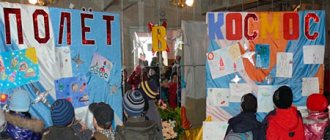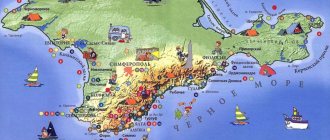Facts about the Moon:
- The oldest mountains on the Moon are considered to be its highlands. Their age exceeds 4 billion years! These hills are densely dotted with meteorite craters - so dense that you can barely find a piece of surface free from them. New impact craters are stacked on top of each other, erasing the boundaries of old craters.
- All the irregularities on the satellite, from huge depressions to the smallest craters, are the consequences of collisions with asteroids and space debris. They fall on the Moon as often as on Earth. But our satellite is not protected by an atmosphere in which most meteorites simply burn up - and when only 128 craters were found on Earth, on the Moon their number exceeded 15 thousand.
- The lunar "seas" are actually ancient plains of solidified lava. They were formed at the sites where the largest asteroids fell. Their mass generated explosions that were hundreds of times more powerful than the most powerful nuclear bomb. The impact craters were so large and deep that lava seeped to the surface and spread out into a lake.
- There are no rocks, large boulders or pronounced rocks on the Moon, like on Earth. Being exposed to the destructive influence of the Sun and outer space for billions of years, they dissipated into rock powder - the famous lunar dust that covers the entire satellite.
- Despite these destructive processes, the appearance of our satellite is changing very slowly. Dinosaurs who lived millions of years ago saw the Moon in the sky the same way we see it now. While the continents on the planet were transforming, taking on their current shapes, the surface of our satellite remained almost unchanged.
- The youngest formations on the Moon are craters with light rays. There are no visible traces of water on the surface of our planet’s satellite. Even the winding channels on the Moon, similar to river beds, were formed from volcanic lava flows.
Online lesson on the surrounding world “The Moon is a satellite of the Earth”
During the day the Sun shines in the sky, at night the Moon shines. Their light is completely different. The sun illuminates the entire sky and the entire Earth, its rays warm. The moon shines beautifully in the sky, but it cannot dispel the darkness and does not provide warmth. We know from the Internet lesson on the world around us “The Sun. Planets of the Solar System”, that the Sun is a star, it shines on its own. What is the Moon?
This is what our online lesson is about...
The moon itself does not shine, it only reflects the light of the sun. Likewise, a sheet of paper is white only if it is in the light, but in complete darkness it is black.
The Moon is a SATELLITE of the Earth. Although, some scientists classify the Moon as a small planet...
A satellite is a celestial body that orbits other cosmic bodies.
You need to know and understand that the Sun is a star . Planets revolve around the Sun , including Earth the Earth’s natural satellite, the Moon, revolves around our planet ...
It seems to us that the Moon is almost the same as the Sun...
In reality, the Moon is much smaller.
If the Sun were the size of a watermelon, then the Moon would be the size of a pea. But they seem almost the same to us, because the Sun is quite far away, and the Moon is close.
Have you noticed that sometimes we see the Moon as round, sometimes as a particle?
By the way, we call the partial Moon a month .
Why is there either a moon or a month? If you watch the Moon every day, you will see that the month is initially thin and points its horns to the left. Then every night it becomes thicker and thicker, turns into a semicircle, and finally the night comes when the Moon becomes whole and round.
This is called the FULL MOON . After this, the Moon begins to melt night after night as if from the other side and gradually turns into a month again. Only now his horns point to the right. The month becomes thinner and thinner, until one night it disappears from the sky altogether. All these transformations occur in about a month (unit of time), more precisely, in 28 days. And it all starts again.
Why is this happening?
Take a ball, preferably a light one. Turn off the lights in the room and leave only the table lamp on. Place the ball nearby and move further away into the darkness. See how the lamp illuminates the ball? The side facing the lamp is filled with light. The other is in the shadows. And here is the boundary between light and shadow. Do you recognize the figure? That's right, it's a month!
Move the ball so that it is behind the lamp. It is fully illuminated. There is no shadow visible, only a circle of light - like the full Moon. Place the ball on the other side of the lamp - it’s a month again, but the horns point in the other direction. Place the ball in front of the lamp - it is completely dark, a solid shadow.
This is why the Moon changes shape. Because it does not glow itself, and because it is a ball. This Sun illuminates it, now from one side, now from the other, now from the front, now from behind. And that’s why we see either a luminous circle, or a month, or we see nothing at all.
Since ancient times, people have watched the Moon orbit the Earth. And many ancient peoples - the Babylonians, Jews, Greeks, Chinese - invented and used the lunar calendar.
Each revolution of the Moon was noted as a new period, which was called a month . What months do you know? ...
But over time, ancient people realized that the Lunar calendar was inconvenient. After all, ancient people were engaged in agriculture, so they were tied to the change of seasons, that is, the movement of the Sun. Therefore, lunar calendars began to be replaced by solar calendars. One exception is the Muslim calendar. It is based only on changes in lunar phases.
Do you know that people always see the same side of the moon? Because the rotation of the Moon around its axis occurs in the same time as its rotation around the Earth.
The moon causes the ebb and flow of the tides on Earth. The Moon's gravitational pull affects our planet's oceans. The highest tides occur during a full or new moon.
What's on the Moon?
People have always loved looking at the moon. Her radiance inspires poets. The moon was also called a loaf of bread, a circle of cheese, and a flatbread. And a month - a roll of bread or a slice of orange.
When people found out that the Moon is the closest cosmic body, it immediately became very interesting: what is it like there on the Moon? Is it possible to live there? What if someone lives on it?
Since then, the Moon has been well examined through telescopes and even astronauts have visited it. No, you can't live there at all. It is very hot on the sunny side, very cold in the shade. There is no water and no air. Since there is no air, sound is not transmitted. Even if the gun roars, you won’t hear... In addition, without air, a person can only walk on the Moon in a spacesuit.
The entire planet is covered with rocks and dust. There are a lot of large, deep pits with raised edges - craters . They were caused by explosions when rocks from space fell onto the Moon at great speed.
Craters do not smooth out over time. On Earth, they would have collapsed over several centuries under the influence of air and water, wind and rain. But on the Moon there is nothing to compare the edges of the craters with, so they remain preserved for millions of years.
Although the Moon is the closest cosmic body to us, many unsolved mysteries remain.
For example, if you look closely at the Moon, you can see dried up seas... Where did they come from? And was there water on the Moon?
I recommend reading:
- 77 Effective Educational Techniques
- Interesting...Great people who changed the world
- Mathematics Olympiad (2nd grade)
- Class hour "Science and Technology Day"
Tags: videoInternet lessonspaceenvironmentworldly video
Lesson in 1st grade “Why is the Moon different?”
Irina Bodrichenko
Lesson in 1st grade “Why is the Moon different?”
Subject: Environment
Class : 1-A
Topic: Why is the Moon different ?
Goal: To develop the cognitive interests of students; to form an idea of the Moon as a satellite of the Earth; explain to children why people don’t live on the moon using a multimedia presentation; cultivate children's interest in the world around them; to form friendly relationships between students, the ability to understand themselves and others.
Objectives: Educational: Expand and deepen students’ knowledge about the Moon, the Earth’s natural satellite.
Developmental: Develop ideas about the shape, size, color of objects; speech, attention, memory, logical thinking, fine motor skills.
Educational: To cultivate a love of nature and respect for the environment.
Cognitive: general educational – conscious and voluntary speech statement orally about changes in the appearance of the Moon; logical - searching for the necessary information (from the story of the teacher, parents, from one’s own life experience, stories, fairy tales, etc.).
Personal: understand the meaning of knowledge for a person and accept it.
Regulatory: predict the results of the level of mastery of the material being studied.
Communicative: able to exchange opinions, listen to another student - communication partner and teacher.
Eclipses
A lunar eclipse is an astronomical phenomenon when the Moon enters the cone of the shadow cast by the Earth. There are different versions of a lunar eclipse: when the shadow completely covers the Moon, it is a total lunar eclipse, and when only part of the Moon is darkened, it is a partial lunar eclipse. If the Moon passes through the penumbral region but does not enter the umbra, a penumbral eclipse occurs.
Moon eclipse
Lunar eclipses occur during the full moon, at such moments when the Moon is exactly behind the Earth and the giant shadow of our planet falls on it, obscuring the sunlight.
Space travelers
Did man manage to visit the moon? Of course we succeeded. In total, 12 people got the opportunity to walk on the surface of the earth’s satellite. They were all American astronauts.
The first was the American Neil Armstrong. This happened on July 21, 1969. He stayed on the surface for 21 hours and 36 minutes.
Well, astronauts Eugene Cernan and Harrison Schmitt spent the longest time on the moon. They stayed there for 75 hours and 1 minute. This happened in December 1972.
Also, not only people, but also special devices worked on our satellite. Have you heard about Lunokhod?
This is a Soviet spacecraft that landed on the surface of the moon on September 17, 1970. It was remote controlled from the ground. Walked on the surface for more than 10 km. With its help, scientists conducted soil studies and took photographs of the lunar surface. For 10 and a half months, the lunar rover worked properly. And on September 14, 1971, he did not get in touch.
Moon - explanation for children
The Moon is a natural satellite of the Earth : description for children with photos: interesting facts, characteristics, orbit, map of the Moon, USSR research, Apollo, Neil Armstrong.
or teachers at school start explaining to children by saying that the earth’s satellite is incredibly easy to detect. The Earth has a single Moon that accompanies us almost every night. Lunar phases have controlled humanity for thousands of years, forcing them to adapt (a calendar month is approximately equal to the time it takes for the Moon to change phases).
The phases of the Moon and its orbit remain a mystery to many. You can explain to children that the Moon always shows one face to our planet. The fact is that for an axial rotation and around the planet it takes 27.3 days. We notice the full moon, crescent moon and new moon because the satellite reflects sunlight. The level of illumination depends on the location of the satellite in relation to us and the star.
The moon has a powerful influence on us and may even be the reason for the emergence of life.
The Moon is a natural satellite of the Earth, but it is larger than Pluto (diameter - 3475 km) and occupies 27% of the Earth's size (ratio of approximately 1:4). This is a much smaller ratio than the situation with other moons and their planets.
How the Moon appeared - an explanation for children
for the little ones to know that there are several theories about this. But the most popular one focuses on the collision that tore material away from the Earth . Scientists suggest that the impact object had 10% of the Earth's mass (like Mars ). The pieces orbited until they formed the Moon. This idea is also supported by the fact that the composition of the planet and the satellite are very similar. This could have happened 95 million years after the formation of our system (give or take 32 million).
This is the prevailing theory, but there is also another that suggests that there were originally two moons that merged into one when they collided. Moreover, our planet could even pull over a satellite from Venus .
Who was the first to fly around the Moon?
If you name the American astronauts Borman , Lovell and Anders , the first people to circle the Moon on the Apollo spacecraft in December 1968, you would be mistaken. The pioneers of living creatures who flew around the Moon were... Central Asian turtles.
They were caught near the Baikonur Cosmodrome and placed in one of the automatic lunar probes. After the flight, the “cosmonauts” returned to Earth safe and sound. This happened a few months before the flight of the American astronauts. However, due to the fact that space news was classified at that time, this curious fact became known much later.
Share link
Seasons - explanation for children
The Earth's axis is tilted relative to the plane of the ecliptic (the imaginary surface of the orbit around the Sun). An explanation for children cannot do without deciphering this moment. southern hemispheres take turns pointing to the Sun. This results in different amounts of light and heat being received – the change of seasons.
The Earth's axis is tilted by 23.5 degrees, and the Moon's by 1.5. It turns out that there are practically no seasons on the satellite. Some areas are always lit, while others live forever in the shadows.
Popular message topics
- Poppy (flower)
Thanks to its unusual color shades and combinations of aromas, the world of flowers is a source of inspiration for people, an integral part of their lives. There is not a single person who is not familiar with one of the representatives of the kingdom of flowers - the poppy. - City of Togliatti
In 1737, a charter was signed on the founding of the city - a fortress that would protect Russia from the attacks of nomads, and give the Kalmyks who converted to Christianity a chance to live in a settled way. June 20, 1737 is the birthday of the city of Togliatti. - Word
Most Windows users have encountered Microsoft Office programs in one way or another, and mostly the specific program that interests us, Microsoft Word (also often referred to as WinWord, MS Word), most often simply World.
What's on the back?
No matter where you are on our planet, you will see the same Moon everywhere. And always only one side of it. Why is this happening? The fact is that it rotates around the earth at the same speed as around its axis. Therefore, it turns out that the satellite is always turned to our planet with the same side.
To better understand this, you can conduct a simple experiment. Ask your mom or dad to help you. Let them depict our planet. They just stand quietly. And you will be a companion. Try walking around the ground and at the same time slowly turning around yourself. It turns out that you will always be facing the ground, and the back of your head will not be visible.
But what is there, on the other side? Thanks to photographs taken by spacecraft, scientists found that on the reverse side there is a huge depression, its diameter is more than 2000 km and its depth is 12 km.








